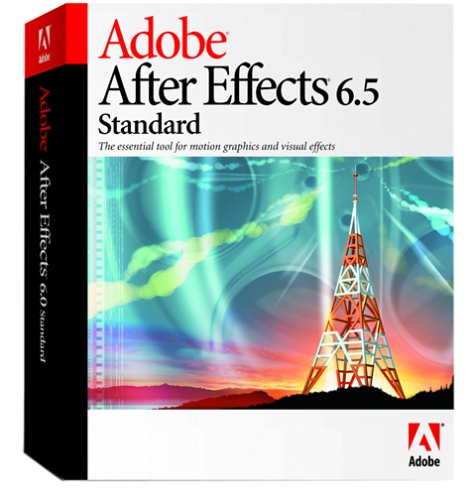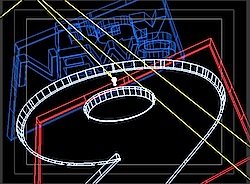13 years after hitting ‘save.’
Sunday, January 10th, 2010
Seems like it’s often in the cold of January when folks are busy resolutioning and starting with clean slates that I pull a couple of old CD backups off the shelf and ask myself “okay, how screwed am I now?”
Because things change. Operating systems change. Applications grow and evolve and the newest version of, say Adobe After Effects will not read files created by the oldest version. (This is even true of the 20 year old Adobe Photoshop, yet they’ve done a better job of most of perpetuating their file format. And some folks say that’s one of their biggest problems.)
I think this year it’s because I was reading a book I picked up on Borders’ discount table for $3.99 by computer journalist Steven Levy, called The Perfect Thing—about the development and launch—right after 9/11—of the iPod, a device that changed (say it with me): everything. (Later, I found Levy’s book for 50 cents at Amazon, but that’s neither here or there.)
So I went from iPod nostalgia—where I took out our old first-gen iPod and powered it up and verified that yep, it still plays songs and the screen still had Chicago type—to watching a couple of old Steve Jobs product introductions (“behold, the tangerine iBook!“) to looking pensively at an old After Effects 3.1 project file from 1997 (hey, not so long ago) and wondering if it would work in nice, shiny, After Effects CS4 on my nice shiny Intel iMac running Shiny..er, Snowy Leopard.
Click. Drag.

Um, no, it would not. However, the error dialog sensibly and helpfully suggested that maybe I could save it in a version of AE that was later than AE 3.1 and earlier than the current one.
 Turns out, the ideal middleman for that is After Effects 6.5 and because, yeah, I have a drawer full of old Adobe disks, I could install it…except, hm, there’s no way it’ll run on Snow Leopard on an Intel machine. And certainly not one running full 64 bit. Well, okay, I need a PowerPC machine running Tiger (Mac OS 10.4). Fortunately, my sister-in-law’s Titanium laptop was recently retired and sits here awaiting a good retirement-home (one where it can be babied and always plugged in)…and sure enough, AE 6.5 installs and runs on that system like a champ, and I was able to open and save the project file and send it over to my modern iMac and ta-da! It opened in After Effects CS4.
Turns out, the ideal middleman for that is After Effects 6.5 and because, yeah, I have a drawer full of old Adobe disks, I could install it…except, hm, there’s no way it’ll run on Snow Leopard on an Intel machine. And certainly not one running full 64 bit. Well, okay, I need a PowerPC machine running Tiger (Mac OS 10.4). Fortunately, my sister-in-law’s Titanium laptop was recently retired and sits here awaiting a good retirement-home (one where it can be babied and always plugged in)…and sure enough, AE 6.5 installs and runs on that system like a champ, and I was able to open and save the project file and send it over to my modern iMac and ta-da! It opened in After Effects CS4.
 Except most of the footage was missing (okay, I could find much of it on other CD backups) and some of that footage used an obsolete Quicktime codec that only runs on old PowerPC machines running 10.4 Tiger or so and…well…short story, the Titanium was able to transcode that video, one clip at a time, into the modern Apple ProRes codec that I would have killed to have worked with back in 1997.
Except most of the footage was missing (okay, I could find much of it on other CD backups) and some of that footage used an obsolete Quicktime codec that only runs on old PowerPC machines running 10.4 Tiger or so and…well…short story, the Titanium was able to transcode that video, one clip at a time, into the modern Apple ProRes codec that I would have killed to have worked with back in 1997.
And then there was a 3D move for which I had the Electric Image project file, and because the version of Electric Image (a 3d rendering program from the dawn of computer time) I have is indeed ancient and yet still runs (in Rosetta) even on Snow Leopard (!!) I was able to open up the project file and rerender the 3d move in what seems like a tiny fraction of the original time.
And so finally, there was my project, right exactly where I left it back in 1997, down to the last kerned character and reflected highlight, running on a modern 64 bit machine.
Moral: keep a PowerPC Mac alive—if on life support—running 10.4. Well, that’s not the only way to have done it, but it’s certainly one path to backward compatibility. And why is backward compatibility at all important? (I mean, it’s not like Time Warner’s gonna call me up now and say we need you to do that Bay News 9 project again. For one thing, they don’t even own Bay News 9 anymore.)
So why go to this Rube Goldbergian trouble? I guess I just think there’s something sacred about hitting ‘save’ on a project or on image and any sort of computer file and having the confidence that 15 or 20 years later, I can still read that file. Or I can go through some process to rehydrate it and breathe life into it. It seems important. And, it seems, it’s not a process that happens easily unless you stay on top of what is compatible with what—which certainly can be a full-time job.
Otherwise, what does ‘save’ mean, exactly?

